Mirella Sichirollo Patzer's Blog, page 9
December 30, 2016
The early life of Queen Victoria
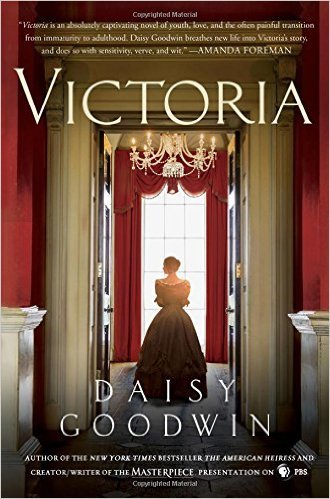
Drawing on Queen Victoria’s diaries, which she first started reading when she was a student at Cambridge University, Daisy Goodwin―creator and writer of the new PBS/Masterpiece drama Victoria and author of the bestselling novels The American Heiress and The Fortune Hunter―brings the young nineteenth-century monarch, who would go on to reign for 63 years, richly to life in this magnificent novel.Early one morning, less than a month after her eighteenth birthday, Alexandrina Victoria is roused from bed with the news that her uncle William IV has died and she is now Queen of England. The men who run the country have doubts about whether this sheltered young woman, who stands less than five feet tall, can rule the greatest nation in the world.Despite her age, however, the young queen is no puppet. She has very definite ideas about the kind of queen she wants to be, and the first thing is to choose her name.“I do not like the name Alexandrina,” she proclaims. “From now on I wish to be known only by my second name, Victoria.”Next, people say she must choose a husband. Everyone keeps telling her she’s destined to marry her first cousin, Prince Albert, but Victoria found him dull and priggish when they met three years ago. She is quite happy being queen with the help of her prime minister, Lord Melbourne, who may be old enough to be her father but is the first person to take her seriously.On June 19th, 1837, she was a teenager. On June 20th, 1837, she was a queen. Daisy Goodwin’s impeccably researched and vividly imagined new book brings readers Queen Victoria as they have never seen her before.
Opinion
I have yet to watch the PBS Series Victoria, but after reading this novel, I am intrigued and eager to see it. The author wrote both the screenplay and this book.
The novel spans the early life of Victoria, from becoming queen to her marriage to Prince Albert. The author did an exceptional job at portraying Victoria as young and impressionable, sometimes naive, too. I enjoyed the interaction and affection she shared with the Prime Minister who proved to be a strong ally and mentor, guiding and easing her into the political arena.
I loved this book from start to finish. It is a coming of age story, one of perseverance and triumph, and one that portrays Victoria with all her imperfections and courage. For those who are fascinated with England's Royal Family or those who simply enjoy historical biographical tales, there is much within this book's pages to entertain. It definitely left me eager to read the next installment.
Definitely recommended.










Published on December 30, 2016 10:26
December 14, 2016
Stand by your man! The loyalty of Emma Jung
 Emma Rauscheback JungEmma was one of the richest heiresses in all of Switzerland when she met the handsome but penniless psychiatrist and psychoanalyst, Carl Jung.
Emma Rauscheback JungEmma was one of the richest heiresses in all of Switzerland when she met the handsome but penniless psychiatrist and psychoanalyst, Carl Jung.  Carl JungThe moment he set eyes on Emma, he knew she would become his wife. That instinct proved true - Emma agreed to marry him. They wed on Valentine's Day in 1903.
Carl JungThe moment he set eyes on Emma, he knew she would become his wife. That instinct proved true - Emma agreed to marry him. They wed on Valentine's Day in 1903. Loyal and dedicated to her husband, Emma became his partner. She assisted him in his work and soon became an analyst like him. What really fascinated her, however, was the legend of the Holy Grail.
The years of the marriage were more than turbulent. Carl Jung had a darker side he had kept hidden from her at first. The victim of child sexual abuse, he had always led a tortured, isolated life.
As an analyst, she began to work independently of her husband and she regularly corresponded with Sigmund Freud.
Their marriage produced five children. After the birth of their last child, Carl's philandering ways took root. That's when Carl met a young patient who began training under him. Her name was Toni Wolff, and Carl was entirely smitten by her.

After the birth of his last child with Emma, he entered into an affair with Toni that lasted for several decades.
He swept Toni to Ravenna on a secret vacation and even found a way to bring her into his household. Carol considered Toni to be his second wife. A gritty Emma tolerated the relationship between the two, but she banned Toni from sharing their meals or spending time with the family in the evening. In time, Carl begged Emma for a divorce, but she refused. Carl's affairs did not begin or end with Toni Wolff. Other women came forward, namely Sabina Spielrein who kept a diary of her love affair with Carl. Despite Carl's affairs, he loved Emma. She died of cancer in 1955, six years before he did. He grieved her sorely, claiming she was the foundation of his home and calling her a queen. He had her gravestone engraved with, "Oh vase, sign of devotion and obedience."Author Catrine Clay has delved into researching Emma Jung's life and has put together her intriguing non-fictional biography entitled Labyrinths.
LABYRINTHSbyCatrine Clay
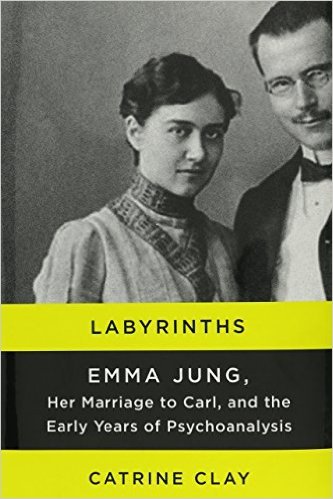 A sensational, eye-opening account of Emma Jung’s complex marriage to Carl Gustav Jung and the hitherto unknown role she played in the early years of the psychoanalytic movement.Clever and ambitious, Emma Jung yearned to study the natural sciences at the University of Zurich. But the strict rules of proper Swiss society at the beginning of the twentieth century dictated that a woman of Emma’s stature—one of the richest heiresses in Switzerland—travel to Paris to "finish" her education, to prepare for marriage to a suitable man.Engaged to the son of one of her father’s wealthy business colleagues, Emma’s conventional and predictable life was upended when she met Carl Jung. The son of a penniless pastor working as an assistant physician in an insane asylum, Jung dazzled Emma with his intelligence, confidence, and good looks. More important, he offered her freedom from the confines of a traditional haute-bourgeois life. But Emma did not know that Jung’s charisma masked a dark interior—fostered by a strange, isolated childhood and the sexual abuse he’d suffered as a boy—as well as a compulsive philandering that would threaten their marriage.Using letters, family interviews, and rich, never-before-published archival material, Catrine Clay illuminates the Jungs’ unorthodox marriage and explores how it shaped—and was shaped by—the scandalous new movement of psychoanalysis. Most important, Clay reveals how Carl Jung could never have achieved what he did without Emma supporting him through his private torments. The Emma that emerges in the pages of Labyrinths is a strong, brilliant woman, who, with her husband’s encouragement, becomes a successful analyst in her own right.
A sensational, eye-opening account of Emma Jung’s complex marriage to Carl Gustav Jung and the hitherto unknown role she played in the early years of the psychoanalytic movement.Clever and ambitious, Emma Jung yearned to study the natural sciences at the University of Zurich. But the strict rules of proper Swiss society at the beginning of the twentieth century dictated that a woman of Emma’s stature—one of the richest heiresses in Switzerland—travel to Paris to "finish" her education, to prepare for marriage to a suitable man.Engaged to the son of one of her father’s wealthy business colleagues, Emma’s conventional and predictable life was upended when she met Carl Jung. The son of a penniless pastor working as an assistant physician in an insane asylum, Jung dazzled Emma with his intelligence, confidence, and good looks. More important, he offered her freedom from the confines of a traditional haute-bourgeois life. But Emma did not know that Jung’s charisma masked a dark interior—fostered by a strange, isolated childhood and the sexual abuse he’d suffered as a boy—as well as a compulsive philandering that would threaten their marriage.Using letters, family interviews, and rich, never-before-published archival material, Catrine Clay illuminates the Jungs’ unorthodox marriage and explores how it shaped—and was shaped by—the scandalous new movement of psychoanalysis. Most important, Clay reveals how Carl Jung could never have achieved what he did without Emma supporting him through his private torments. The Emma that emerges in the pages of Labyrinths is a strong, brilliant woman, who, with her husband’s encouragement, becomes a successful analyst in her own right.
OPINION:
I don't normally read non-fiction. I prefer fictionalized biographies, but Labyrinths by Catrine Clay was entirely entertaining and well worth reading. It is obvious the author conducted in-depth research into Emma's life, drawing from personal letters, diaries, and articles of the time. Together, she gives us an intimate glimpse into the turbulent life of this famous couple. I also learned a great deal about psychoanalysis and the interpretation of dreams, a subject that has always fascinated me.
If you adore reading about stoic, intelligent, and courageous women, despite facing numerous adversities, then this book is sure to keep you as entertained as it did me. Well worth reading! Highly recommended!









Published on December 14, 2016 16:19
November 8, 2016
A Warrior of the People - Susan La Flesche Picotte
 Dr Susan Laflesche Picotte
Dr Susan Laflesche Picotte1865 - 1915
The first American Indian woman to earn a medical degree.
She graduated at the top of her class, and a year early.
She founded the first privately funded hospital located on a reservation.
Susan La Flesche Picotte was first person to receive federal aid for professional education, and the first American Indian woman in the United States to receive a medical degree. In her remarkable career she served more than 1,300 people over 450 square miles, giving financial advice and resolving family disputes as well as providing medical care at all hours of the day and night.
Susan La Flesche was born to Chief Joseph La Flesche (Iron Eyes) and his wife, Mary (One Woman) on the Omaha Reservation in northeastern Nebraska. She attended school there until age 14. Her father encouraged his people to seek education and build relationships with white reform groups. After being home-schooled for several years, Picotte was sent to the Elizabeth Institute for Young Ladies in New Jersey.
 Elizabeth Institute for Young Ladies in New Jersey.
Elizabeth Institute for Young Ladies in New Jersey.She returned home at age 17 to teach at the Quaker Mission School on the Omaha Reservation for two years.
As a child, she had watched a sick Indian woman die because the local white doctor would not give her care. Picotte later credited this tragedy as her inspiration to train as a physician, so she could provide care for the people she lived with on the reservation.
While working at the Quaker school, La Flesche attended to the health of ethnologist Alice Fletcher, who was working there.
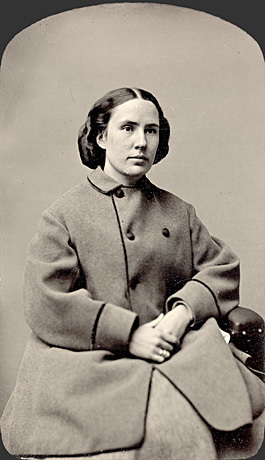 Alice FletcherWith Fletcher's urging, she went back East to complete her education and earn a medical degree. She enrolled at Hampton Institute, one of the nation's first and finest schools of higher education for non-white students.
Alice FletcherWith Fletcher's urging, she went back East to complete her education and earn a medical degree. She enrolled at Hampton Institute, one of the nation's first and finest schools of higher education for non-white students. 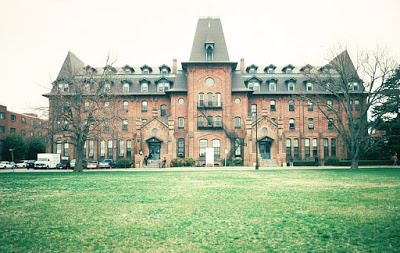 Hampton InstituteThe resident physician there, Martha Waldron, was a graduate of the Woman's Medical College of Pennsylvania (WMCP) and encouraged her to apply to the Woman's Medical College.
Hampton InstituteThe resident physician there, Martha Waldron, was a graduate of the Woman's Medical College of Pennsylvania (WMCP) and encouraged her to apply to the Woman's Medical College. Once again, Alice Fletcher helped La Flesche by securing scholarship funds from the U.S. Office of Indian Affairs and the Connecticut Indian Association, a branch of the Women's National Indian Association.
After only two years in a three-year program at WMCP, Susan La Flesche graduated in 1889 at the top of her class. She remained in Philadelphia to complete year's internship, and then returned home to provide health care to the Omaha people at the government boarding school, where she was responsible for some twelve hundred people.
Susan La Flesche married Henry Picotte in 1894 and the couple moved to Bancroft, Nebraska, where she set up a private practice, serving both white and non-white patients. Along with her busy practice, Picotte also raised two sons and nursed her husband through a terminal illness. In 1906 she led a delegation to Washington, D.C., to lobby for prohibition of alcohol on the reservation.
In 1913, two years before her death, she saw her life's dream fulfilled when she opened a hospital in the reservation town of Walthill, Nebraska. Today the hospital houses a museum dedicated to the work of Dr. Susan La Flesche Picotte and the history of the Omaha and Winnebago tribes.Biography Courtesy of National Library of Medicine (NLM)
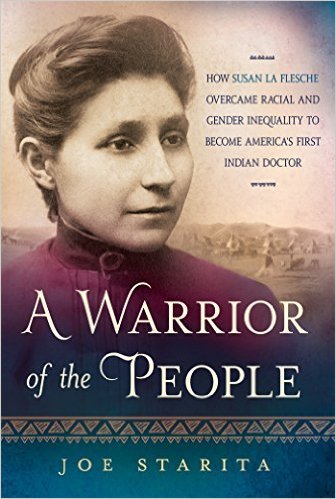
On March 14, 1889, Susan La Flesche received her medical degree―becoming the first Native American doctor in U.S. history. She earned her degree thirty-one years before women could vote and thirty-five years before Indians could become citizens in their own country.By age twenty-six, this fragile but indomitable Indian woman became the doctor to her tribe. Overnight, she acquired 1,244 patients scattered across 1,350 square miles of rolling countryside with few roads. Her patients often were desperately poor and desperately sick―tuberculosis, small pox, measles, influenza―families scattered miles apart, whose last hope was a young woman who spoke their language and knew their customs.This is the story of an Indian woman who effectively became the chief of an entrenched patriarchal tribe, the story of a woman who crashed through thick walls of ethnic, racial and gender prejudice, then spent the rest of her life using a unique bicultural identity to improve the lot of her people―physically, emotionally, politically, and spiritually.
A Warrior of the People is the moving biography of Susan La Flesche’s inspirational life, and it will finally shine a light on her numerous accomplishments.
The author will donate all royalties from this book to a college scholarship fund he has established for Native American high school graduates.
OPINION
I am always thrilled to discover a woman of history who broke barriers and rose above insurmountable odds to achieve a lofty goal even in today's terms. Susan La Flesche did just that. Despite all her amazing achievements, little is known about the details of her life.
Author Joe Starita has conducted intricate research to recreate the path of this wonderous woman's life. He portrayed her honorably, in a way that showed off her fortitude and determined intelligence. She was a woman dedicated to her people and to improving their lives. Teacher, healer, scholar, wife, mother, and physician, she forged through barriers to become the first American Native woman to become a doctor.
Definitely worth reading - it will inspire and motivate you!









Published on November 08, 2016 11:47
November 7, 2016
CHILD OF THE RIVER by Irma Joubert

A compelling coming of age story with an unlikely and utterly memorable heroine, Child of the River is a timeless tale of heartbreak and triumph set in South Africa at the dawn of apartheid. Persomi is young, white, and poor, born the middle child of illiterate sharecroppers on the prosperous Fourie farm in the South African Bushveld. Persomi’s world is extraordinarily small. She has never been to the local village and spends her days absorbed in the rhythms of the natural world around her, escaping the brutality and squalor of her family home through the newspapers and books passed down to her from the main house and through her walks in the nearby mountains.Persomi’s close relationship with her older brother Gerbrand and her fragile friendship with Boelie Fourie—heir to the Fourie farm and fortune—are her lifeline and her only connection to the outside world. When Gerbrand leaves the farm to fight on the side of the Anglos in WWII and Boelie joins an underground network of Boer nationalists, Persomi’s isolated world is blown wide open. But as her very small world falls apart, bigger dreams become open to her—dreams of an education, a profession, a native country that values justice and equality, and of love. As Persomi navigates the changing world around her—the tragedies of war and the devastating racial strife of her homeland—she finally discovers who she truly is, where she belongs, and why her life—and every life—matters.The English language publication of Child of the River solidifies Irma Joubert as a unique and powerful voice in historical fiction.International bestselling author IRMA JOUBERT was a history teacher for 35 years before she began writing fiction. Her stories are known for their deep insight into personal relationships and rich historical detail. She is the author of eight novels and a regular fixture on bestseller lists in The Netherlands and in her native South Africa. She is the winner of the 2010 ATKV Prize for Romance Novels.
Five Things You Need to Know:
1. Child of the River was originally written in Afrikaans as Pérsomiand was published in South Africa in 2010. The story is set in South Africa in the years 1938 to 1968. Americans will be familiar with the two historical themes: the poor white challenge and Apartheid. South Africa’s poor whites of the 1930’s and 1940’s can be compared to the American Dust Bowl experience of the 1930’s – the “Okies” of Oklahoma, Colorado, Kansas, Texas and New Mexico. The second theme is the South African Apartheid system of the 1950’s and 1960’s, not unlike the segregationist ways then prevalent in the American South. And the third and most prominent theme is the unlikely relationship between Pérsomi, the sharecropper’s daughter, and Boelie, the wealthy landowner’s eldest son.
2. As with The Girl From the Train, this novel is set in the northernmost part of South Africa, on a cattle ranch in the Bushveld. The Bushveld is a rugged, hot, dry area that was still largely pioneer country during the mid 20th century. During those years most Afrikaners were farmers (boersin Afrikaans). Electricity was unknown on the Bushveld farms of the 1940’s and 1950’s. Farmers used lamps or candles for lighting and wood stoves for cooking. To enjoy an early morning cup of coffee, they had to fetch water from the river and light the wood stove to bring it to boil. Farmers slaugtered their own cattle or game for meat and baked their own bread in a specially built mud oven.
3. Child of the River is based on two true stories. At school I knew many Pérsomis: girls who sat with me on school benches, shared dormitories with me at boarding school. They had never before slept on a bed, bathed or showered in a modern bathroom, nor knew how to use a knife and fork. These were the needy children who were handed down charity clothing and who had to collect state subsidised textbooks in front of gawking class mates. Their fathers were drunk weekend after weekend and their sisters were pregnant by age fourteen. My heart went out to them instinctively. I also experienced the Apartheid years. Where I grew up, the Asian owned shops were in the middle of town. I knew Mr. Ravat, his cohort and their shops from a young age. But then these traders were banned to a place far out of town. Their shops and homes were bulldozed. All that remained was a wound in the middle of town, empty land where guilty consciences prevented people from building. They just left because they could no longer trade. I felt their story needed and deserved to be told.
4. Many hours of research went into writing this book. Revisiting the town of my youth, people opened their hearts, retelling many heart-wrenching stories I had heard over the years, unselfishly unravelling the sorrow I had witnessed as a child, but never understood. Much of my research involves conversations with people who experienced events themselves, or whose parents told them the stories. So I spoke with Mr. Ravat, whom I knew as a child. Today, he is a very old man. But at the time of their forced removal he was an upcoming young shopkeeper whose family had been living and trading in the town for generations. Then the silent terror of Apartheid and the Group Areas Act was upon them. His family was torn apart. The Asian characters in my story were pieced together from his memories and based on court reports. I found it personally very fulfilling.
5. A follow up of this novel is due for publication in the US in 2017. Readers can again encounter the main characters Pérsomi and Boelie, the self-centered Annabel de Vos (she just forced herself into my novel, as she would!), the ever charming De Wet Fourie, Antonio’s brother Marco all the way from Italy, and the most interesting character of all, the young Asian doctor, Yusuf Ismail.
OPINION:
Based on actual accounts, this is a sweeping novel that takes the readers straight into the heart of Apartheid in South Africa during the mid 1950's. At the heart of the tale is a young woman named Persomis, the daughter of a poor whie sharecropper. Her home life is dysfunctional. Her father is a drunk who beats his family. When Persomis's mother is taken away by the police, social workers step in and seize her younger siblings. They send Persomi to a boarding school, she then attends university and earns a law degree.
When she returns home, she takes on a case to fight against a law that forces non-whites to leave their homes, neighborhoods, and businesses and move to a location strictly for non-whites. It is this work that brings new enlightening to Persomi that forever alters her life.
The author knows her material well, and it materialized in the splendid descriptions and relaying the South African political atmosphere of the times. I very much appreciated the glossary of South African terms at the start of the book. The author has a knack for delving deep into the psyche of her characters which makes them real and often larger than life. Their plight became my plight and my emotions were stirred in many directions throughout the reading of this important historical novel.









Published on November 07, 2016 08:09
November 5, 2016
The Most Sought After Bride of the 12th Century - Eleanor of Aquitaine -
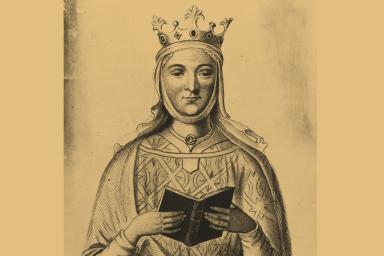 Eleanor of Aquitaine
Eleanor of Aquitaine1122 - 1204
Imagine inheriting a vast fortune at the age of 15. Now imagine it happened during the middle ages and you were a mere girl. Well that happened to Eleanor of Aquitaine, and it made her the most sought after bride in all of Europe.
Eleanor was born in France. Her father was William X, the Duke of Aquitaine. He ensured she was well educated, not only in the womanly arts, but also in several languages, literature, horsemanship, and philosophy. He also made sure she understood the intricacies of court life. Why? Well she was his only heir. When her father died, she was only 15 and inherited daddy's title, lands, and wealth. Now rich, the Duchess of Aquitaine, suddenly found herself immensely popular with menfolk. Suddenly under the guardianship of the King of France, and within mere hours, he betrothed her to his heir, Louis VII.
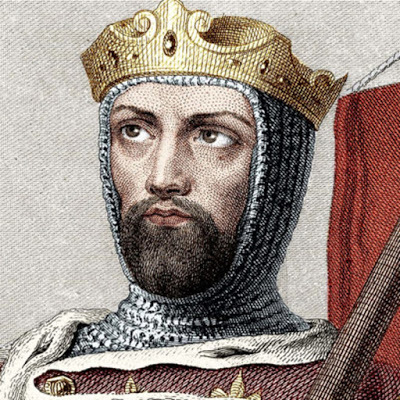 King Louis VII of FranceA contingent of no less than 500 men arrived in Aquitaine to deliver the news and take her to the French court. Because of the swiftness of their betrothal and marriage, the couple were mere strangers to each other. Mere weeks after their nuptials, her father-in-law the king became ill and succumbed. Eleanor and Louis moved into the cold and austere Cîté Palace in Paris. Eleanor and Louis's coronation took place on Christmas Day. Coming from the warmth of southern France, she was ill prepared for cold northern regions. One of the first things she did after she was married was renovate the palace and install built-in fireplaces in nearly every room. Surprised by the pleasant renovation, many other nobles followed suit and installed their own indoor fireplaces.The first two years of their reign were ones of great conflict. The power struggles came from Count Theobald of Champagne and the Pope. Louis, little more than a youth, inexperienced and brash, made some serious political and military blunders that antagonized his vassals. War soon followed and the devastation was immense. A battle in the town of Vitry, forced thousands to flee or to the refuge of a church. Louis' soldiers set it aflame. It left blood on his hands and guilt plagued him for years. To cleanse himself of sin, he answered the Pope's call for cruade. Eleanor went with him. The journey was dangerous, rough, uncomfortable, and they were beset with misfortune. Eleanor and Louis grew apart and their marriage suffered terribly. The more the public turned against Louis, the more estranged they became until finally they were granted an annulment on the basis of being related by blood. Their two daughters had to remain in Louis' custody.
King Louis VII of FranceA contingent of no less than 500 men arrived in Aquitaine to deliver the news and take her to the French court. Because of the swiftness of their betrothal and marriage, the couple were mere strangers to each other. Mere weeks after their nuptials, her father-in-law the king became ill and succumbed. Eleanor and Louis moved into the cold and austere Cîté Palace in Paris. Eleanor and Louis's coronation took place on Christmas Day. Coming from the warmth of southern France, she was ill prepared for cold northern regions. One of the first things she did after she was married was renovate the palace and install built-in fireplaces in nearly every room. Surprised by the pleasant renovation, many other nobles followed suit and installed their own indoor fireplaces.The first two years of their reign were ones of great conflict. The power struggles came from Count Theobald of Champagne and the Pope. Louis, little more than a youth, inexperienced and brash, made some serious political and military blunders that antagonized his vassals. War soon followed and the devastation was immense. A battle in the town of Vitry, forced thousands to flee or to the refuge of a church. Louis' soldiers set it aflame. It left blood on his hands and guilt plagued him for years. To cleanse himself of sin, he answered the Pope's call for cruade. Eleanor went with him. The journey was dangerous, rough, uncomfortable, and they were beset with misfortune. Eleanor and Louis grew apart and their marriage suffered terribly. The more the public turned against Louis, the more estranged they became until finally they were granted an annulment on the basis of being related by blood. Their two daughters had to remain in Louis' custody.  Henry II She became a sought after prize once again, but not remain unmarried for long. Two months after her annulment, she married Henry II Plantagenet, Count of Anjou and Duke of Normandy. She got along so well with her soon-to-be father-in-law that rumors swirled about there being an affair between them. And despite the fact she was more of a blood relative to Henry than she had been to Louis, they married. Two years later, upon the death of her father-in-law, Henry and Eleanor became King and Queen of England. Fiercely independent, full of energy and spunk, and highly educated, Eleanor was no shrinking violet in the face of conflict. Their marriage was fraught with much bickering and arguments, but despite all that, she bore eight children for Henry. Meanwhile, King Henry became increasingly unfaithful. Bearing children kept her out of the political arena for many years. In 1167, Eleanor separated from Henry and moved her household to Poitiers.
Henry II She became a sought after prize once again, but not remain unmarried for long. Two months after her annulment, she married Henry II Plantagenet, Count of Anjou and Duke of Normandy. She got along so well with her soon-to-be father-in-law that rumors swirled about there being an affair between them. And despite the fact she was more of a blood relative to Henry than she had been to Louis, they married. Two years later, upon the death of her father-in-law, Henry and Eleanor became King and Queen of England. Fiercely independent, full of energy and spunk, and highly educated, Eleanor was no shrinking violet in the face of conflict. Their marriage was fraught with much bickering and arguments, but despite all that, she bore eight children for Henry. Meanwhile, King Henry became increasingly unfaithful. Bearing children kept her out of the political arena for many years. In 1167, Eleanor separated from Henry and moved her household to Poitiers. Now as mistress of her own domain, Eleanor worked hard to create a legend dubbed the Court of Love. She created a court where the expectations were of love and chivalry, with plenty of folklore shared by bards, and with plenty of learned books and poetry. Through song and words, troubadours and writers used their skills to share tales of courtly love with others outside her kingdom. Artists and poets traveled from far and wide to experience life in Eleanor's court.
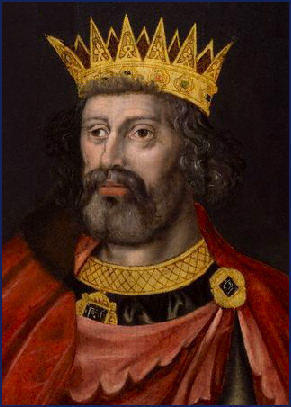 Henry IIIIn 1173, Eleanor’s son, Henry, plotted against his father to seize England's crown. Rumors abounded that Eleanor helped her son. She was arrested and imprisoned for treason, spending the next 16 years of her life being moved from castle to castle. The king suspected her of plotting against his interests. He even blamed her for the death of his favorite mistress, Rosamund.
Henry IIIIn 1173, Eleanor’s son, Henry, plotted against his father to seize England's crown. Rumors abounded that Eleanor helped her son. She was arrested and imprisoned for treason, spending the next 16 years of her life being moved from castle to castle. The king suspected her of plotting against his interests. He even blamed her for the death of his favorite mistress, Rosamund. Young Henry spent years fighting against his father until he became ill in the year 1183. On his deathbed, he begged his father to release his mother. Henry did so and he allowed her to return to England in 1184. Once there, she again participated in the pomp and ceremony of her husband's royal court.
Five years later, Henry II died and was succeeded by their son, Richard. The first thing Richard did was free his mother from prison and restore to her all her freedoms. When Richard departed to lead the Third Crusade, Eleanor ruled as regent for him. He became known as Richard the Lionheart and returned to England and ruled until his death in 1199.
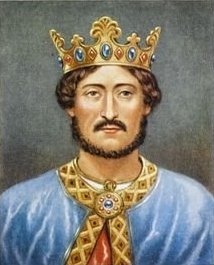 Richard the Lion-heartNext to take the crown was Eleanor's youngest son, John. He sent her to France as his envoy. She offered John her support when her grandson, Arthur, rebelled.
Richard the Lion-heartNext to take the crown was Eleanor's youngest son, John. He sent her to France as his envoy. She offered John her support when her grandson, Arthur, rebelled. 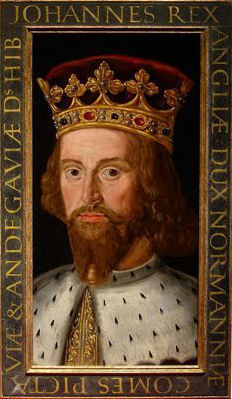 King JohnIn her declining years, she retired to the abbey at Fontevraud and took her vows to become a nun. When she died in 1204, she was buried in the abbey.
King JohnIn her declining years, she retired to the abbey at Fontevraud and took her vows to become a nun. When she died in 1204, she was buried in the abbey.The Son She Loved. The Betrayal She Faced. The Legend She Became.
The stunning conclusion to the Eleanor of Aquitaine trilogy!
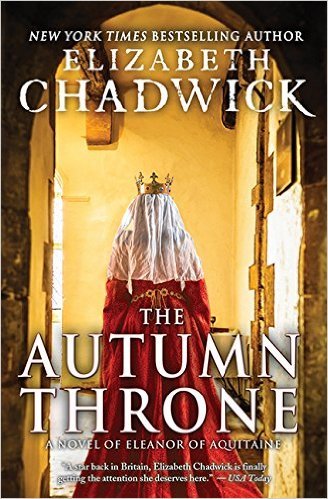 Imprisoned by her husband. Separated from her children. If King Henry II thought these things would push his queen into submission, he was wrong. Eleanor of Aquitaine refused to give into his tyranny. Freed by his death, she became dowager Queen of England. But the competition for land and power that Henry bred among his sons had grown into a dangerous rivalry that Eleanor must skillfully control. Eleanor would need every ounce of courage and fortitude as she crossed the Alps in winter to bring her son Richard his bride, ransom him from imprisonment and deal with his brother John's treachery. Her indomitable spirit would be tested to its limits as she attempted to keep the peace between her warring sons, fend off enemies, and negotiate a magnificent future for a chosen granddaughter.
Imprisoned by her husband. Separated from her children. If King Henry II thought these things would push his queen into submission, he was wrong. Eleanor of Aquitaine refused to give into his tyranny. Freed by his death, she became dowager Queen of England. But the competition for land and power that Henry bred among his sons had grown into a dangerous rivalry that Eleanor must skillfully control. Eleanor would need every ounce of courage and fortitude as she crossed the Alps in winter to bring her son Richard his bride, ransom him from imprisonment and deal with his brother John's treachery. Her indomitable spirit would be tested to its limits as she attempted to keep the peace between her warring sons, fend off enemies, and negotiate a magnificent future for a chosen granddaughter.Opinion:
Very few authors are able to bring to life from the middle ages as well as Elizabeth Chadwick can. She has a gift for creating deep understanding of her character's thoughts, desires, and motivations. Years of meticulous research into all aspects of medieval life allows the author to enrich the reader's experience through minute details and rich descriptions regarding everyday medieval life, not only of the nobles, but of all social ranks of the time.
The Autumn Throne is the concluding book in the trilogy of Eleanor of Aquitaine. Although you do not necessarily have to read the first two to understand the third book, I preferred to read the entire series to get a well-rounded view of Eleanor of Aquitaine's life.
Highly recommended. Another 5 star book by this wonderful author who has long been one of my favorites.










Published on November 05, 2016 13:10
October 7, 2016
The Six by Laura Thompson (The Utterly Fascinating, Scandalous Lives of the Mitford Sisters)
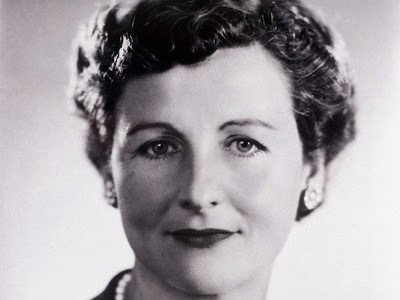 Nancy Mitford
Nancy Mitford1904 - 1973Nancy Mitford was the eldest of the fascinating Mitford Sisters. Highly spirited, and with a relentless sense of humor, she was a terrible tease who loved to joke and play pranks. With her vitriolic tongue, she was a relentless bully to her sisters. Her passion was writing novels. Much of the humor that swirled about in their daily lives made its way into her book. Her most famous novels were THE PURSUIT OF LOVE and LOVE IN A COLD CLIMATE. She also wrote a biography about the Sun King. Despite her great sense of humor and pretty face, her love life was a dismal failure. She fell in love with three different aristocrats - once with a homosexual, then a very smart but dull man, and finally with a French Officer who never returned her love.
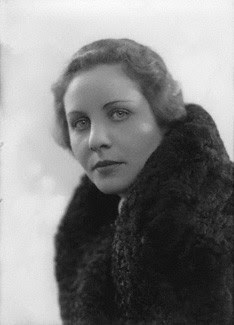 Pamela Mitford
Pamela Mitford1907 - 1994Pamela was the quietest sister with no scandals linked to her. She loved the country, was a passionate horsewoman, and was devoted to her dogs. Her husband was an enormously rich physicist and professor, . He loved her for a while, but they divorced after several years. She spent the rest of her life in obscurity as a companion to Giuditta Tomassi who died in 1993.
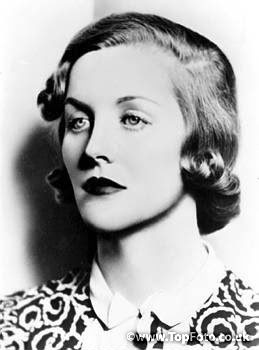 Diana Mitford
Diana Mitford1910 - 2003The third daughter, Diana Mitford, was perhaps one of the most scandalous of the sisters. She married aristocrat and writer Bryan Walter Guinnes in the biggest society wedding of the year. Four years later, causing a great scandal, an with her two children in tow, she left him for British fascist leader Sir Oswald Mosley who was 14 years her senior. But Mosley was already married and he had no intentions of leaving his first wife. When Mosley's wife died, instead of devoting himself fully to Diana, he began an affair with his late wife's younger sister. Diana fled to Germany with her sister Unity. There she met and befriended Hitler, who had her chaufered about in a Mercedes Benz. Yet she continued to be Mosley's mistress, despite his philandering ways and numerous affairs. They were finally married in 1936 and Hitler was a guest at their wedding. As World War II raged, Diana and Mosley were interned at London's Holloway Prison, but Winston Churchill made sure their accommodations were as comfortable as could be. As Mosley's health failed, they were sent into house arrest until the end of the war. Diana continued to hold Hitler in high regard and remained staunchly Nazi until her death at the age of 93. She was one of the many elderly victims of the terrible European heatwave of 2003.
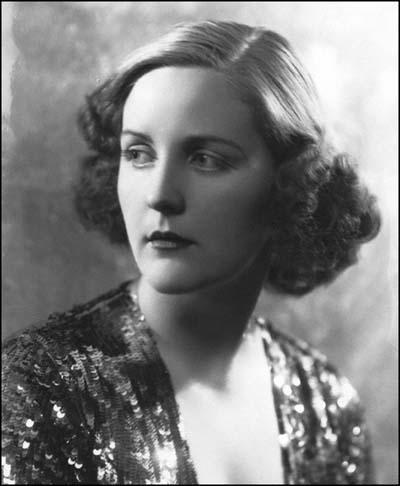 Unity Mitford
Unity Mitford1914 - 1948Nicknamed "Bobo", Unity was the most notorious and disgraceful sister. She can be described as nasty, insufferable, and unpleasant who always got her way by being obnoxiously rude, and disagreeable. Described as eccentric, she loved to play games with people, hurting them, starting useless quarrels and dense arguments. During a debutante ball, she released her pet rat. Like her sister, Unity worshiped Hitler. Overly tall, and not as beautiful as her other sisters, she came across as crass and cold. Chastised by her parents, she ran to the security of her sister Diana where sunder the guise of learning German, where she relentlessly pursued Hitler until he "noticed" her. Of course he was was flattered to have an English aristocrat panting for him. He indulged her in very way, from providing her with an apartment with housekeeper, after throwing out the Jewish family that lived there. But Hitler's closest confidants despised her. She was rude and audacious, clearly arrogant, and they were concerned at the influence she exerted over their dictator.
When she publicly sided with Julius Streicher because he gave her what she wanted, she faced ostracism. When war was declared by Britain against Germany, the German government ordered all Brits deported. Devastated to have lost all her possessions and pleasant life, attempted suicide by shooting herself in the head. She failed to kill herself and was left severely brain damaged. he was sent back to England with all medical expenses paid for by Hitler. The bullet remained embedded in her brain as doctors deemed it to difficult to remove. At the age of 33, she died when meningitis caused her brain to swell around the bullet.
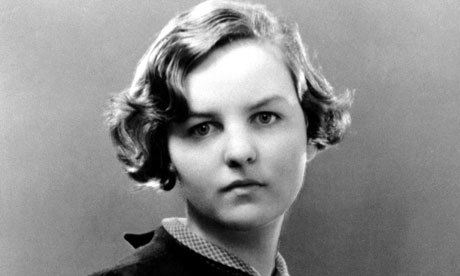 Jessica Mitford
Jessica Mitford1917 - 1996Jessica's nickname was "Decca". When she was 19 years old, and underage according to the law, she eloped to Spain with Esmond Romilly, her cousin and nephew of Winston Churchill. Both sets of parents greatly disapproved. Her parents did everything to split them up. They even sent destroyer of the Royal Navy to bring her back. When she announced she was pregnant, her parents gave up the fight and allowed her to marry. Her father disowned her and even refused to see her while on his deathbed.
When war against Germany was declared, Esmond joined the Royal Canadian Air Force. He was shot down in 1941 at the age of 23. Winston Churchill broke the news of her husband's death to her. Jessica spent her remaining years in the USA, working hard to support herself with office work. Later, she became an investigative writer and wrote her autobiography revealing much about her family.
 Deborah Mitford
Deborah MitfordDuchess of Devonshire
1920 - 2014 And last but not least, was Deborah, the youngest daughter. No scandals here. She led an exemplary life. She married Andrew Cavendish who became the Duke of Devonshire. Together, the young couple restored his ancestral home, Chatsworth House, into its former glory as an elegant stately homes. Like her elder sisters, she also wrote books. She was the 10th Duchess of Devonshire and was considered the most perfect of them all. She was last surviving sister.
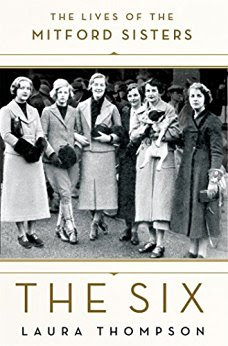
“Riveting. The Six captures all the wayward magnetism and levity that have enchanted countless writers without neglecting the tragic darkness of many of the sisters’ life choices and the savage sociopolitical currents that fueled them.” – Tina Brown, The New York Times Book ReviewThe eldest was a razor-sharp novelist of upper-class manners; the second was loved by John Betjeman; the third was a fascist who married Oswald Mosley; the fourth idolized Hitler and shot herself in the head when Britain declared war on Germany; the fifth was a member of the American Communist Party; the sixth became Duchess of Devonshire. They were the Mitford sisters: Nancy, Pamela, Diana, Unity, Jessica, and Deborah. Born into country-house privilege in the early years of the 20th century, they became prominent as “bright young things” in the high society of interwar London. Then, as the shadows crept over 1930s Europe, the stark—and very public—differences in their outlooks came to symbolize the political polarities of a dangerous decade. The intertwined stories of their stylish and scandalous lives—recounted in masterly fashion by Laura Thompson—hold up a revelatory mirror to upper-class English life before and after WWII.The Six was previously published as Take Six Girls.
OPINION:
The Six is a very ambitious biography/memoir steeped in historical detail and family heritage. To biographize all six sisters into one book was likely not an easy task. The author provided a complete family tree, which helped keep track of the various personages included in the book.
As a writer myself, I have to applaud the efforts made by the author to write six different biographies demonstrating how the sisters interacted with each other and how their decisions affected their family. The way they were raised was fascinating and troublesome, and it is no wonder that they were each affected by it. A poignant memoir for sure!









Published on October 07, 2016 15:58
September 19, 2016
I Believe in Prophetic Dreams and so did Matilde of Ringelheim!
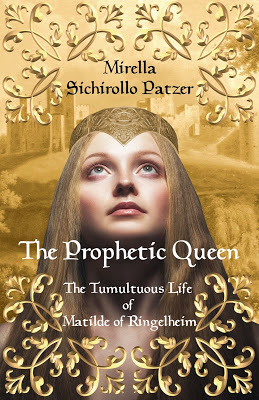 Do you believe in prophetic dreams? I never used to believe in them, but then something happened that forever changed my mind and convinced me otherwise. I dreamed the lottery numbers. Yes, I did!
Do you believe in prophetic dreams? I never used to believe in them, but then something happened that forever changed my mind and convinced me otherwise. I dreamed the lottery numbers. Yes, I did! In my dream, a friend approached me with a lottery ticket we had purchased together. He told me that our ticket had won a $46 million dollar jackpot and that we would split it. In my dream I took the ticket into my hand and studied the numbers. 3, 18, 21, 38, and my excitement grew. That’s when I began to awaken, and as I slowly rose out of my slumber, I suddenly sprang out of bed in a frantic search for pen and paper. By the time I stumbled around the kitchen and found what I was looking for, I had forgotten the last two numbers and could only remember those precious first four numbers.
As a non-believer of prophetic dreams, I didn’t make too much of it. That was my first mistake! I did, however, go to the grocery store on my way to work that night and bought lottery ticket. The jackpot was $10 million dollars. Of course I played those four numbers – 3, 18, 21, 38, but then used 46 and 23 as the missing numbers because they were the other two numbers mentioned in my dream – the $46 million divided by the two of us – hence $23. That was my second mistake. I should have bought enough tickets and played every combo of numbers to replace those two numbers I could not remember.
That entire day, I experienced very strong feelings that I was going to win. During my drive to work, I even planned what to do with the winnings. In the middle of my shift, I took a break and called the lottery line. The four numbers I recalled had won, but my choice of 46 and 23 were wrong. Instead of $10 million dollars, I won a mere $87.00.
I am now completely convinced in the veracity of prophetic dreams. Abraham Lincoln dreamed of his death. Albert Einstein’s theory of relativity came to him in a dream. Mark Twain dreamed of his brother’s death on a steamship. And there are many, many more examples throughout history.
It is no wonder that after my own personal experience, the topic of prophetic dreams has fascinated me for years. When I accidentally stumbled upon a bio of a little know woman of history named Matilde of Ringelheim, one phrase caught my attention – her prophetic dreams. It immediately sparked my imagination. The more I delved into her life, the more fascinated I became. In Matilde’s case, her dreams foretold of her family’s successes and their deaths. The most famous of her dreams happened when she lay upon her deathbed and was visited by her grandson. She had dreamed about his death and before he left her bedside, she insisted he take her last possession, her burial garments. A few days later, he died an accidental death.
I recently released a fictionalized biography about her life entitled THE PROPHETIC QUEEN. The book follows history as closely as possible, while exploring her thoughts, emotions, and reactions to her ability to prophesize the future through her dreams. A truly fascinating woman of history!
The Prophetic Queen - PaperbackThe Prophetic Queen - Amazon Kindle










Published on September 19, 2016 09:00
I Believe in Prophetic Dreams and so did Matide of Ringelheim!
Do you believe in prophetic dreams? I never used to believe in them, but then something happened that forever changed my mind and convinced me otherwise. I dreamed the lottery numbers. Yes, I did!
In my dream, a friend approached me with a lottery ticket we had purchased together. He told me that our ticket had won a $46 million dollar jackpot and that we would split it. In my dream I took the ticket into my hand and studied the numbers. 3, 18, 21, 38, and my excitement grew. That’s when I began to awaken, and as I slowly rose out of my slumber, I suddenly sprang out of bed in a frantic search for pen and paper. By the time I stumbled around the kitchen and found what I was looking for, I had forgotten the last two numbers and could only remember those precious first four numbers.
As a non-believer of prophetic dreams, I didn’t make too much of it. That was my first mistake! I did, however, go to the grocery store on my way to work that night and bought lottery ticket. The jackpot was $10 million dollars. Of course I played those four numbers – 3, 18, 21, 38, but then used 46 and 23 as the missing numbers because they were the other two numbers mentioned in my dream – the $46 million divided by the two of us – hence $23. That was my second mistake. I should have bought enough tickets and played every combo of numbers to replace those two numbers I could not remember.
That entire day, I experienced very strong feelings that I was going to win. During my drive to work, I even planned what to do with the winnings. In the middle of my shift, I took a break and called the lottery line. The four numbers I recalled had won, but my choice of 46 and 23 were wrong. Instead of $10 million dollars, I won a mere $87.00.
I am now completely convinced in the veracity of prophetic dreams. Abraham Lincoln dreamed of his death. Albert Einstein’s theory of relativity came to him in a dream. Mark Twain dreamed of his brother’s death on a steamship. And there are many, many more examples throughout history.
It is no wonder that after my own personal experience, the topic of prophetic dreams has fascinated me for years. When I accidentally stumbled upon a bio of a little know woman of history named Matilde of Ringelheim, one phrase caught my attention – her prophetic dreams. It immediately sparked my imagination. The more I delved into her life, the more fascinated I became. In Matilde’s case, her dreams foretold of her family’s successes and their deaths. The most famous of her dreams happened when she lay upon her deathbed and was visited by her grandson. She had dreamed about his death and before he left her bedside, she insisted he take her last possession, her burial garments. A few days later, he died an accidental death.
I recently released a fictionalized biography about her life entitled THE PROPHETIC QUEEN. The book follows history as closely as possible, while exploring her thoughts, emotions, and reactions to her ability to prophesize the future through her dreams. A truly fascinating woman of history!

The Prophetic Queen - PaperbackThe Prophetic Queen - Amazon KindleThe Prophetic Queen - Kobo, Apple, and Barnes & Noble and more!










In my dream, a friend approached me with a lottery ticket we had purchased together. He told me that our ticket had won a $46 million dollar jackpot and that we would split it. In my dream I took the ticket into my hand and studied the numbers. 3, 18, 21, 38, and my excitement grew. That’s when I began to awaken, and as I slowly rose out of my slumber, I suddenly sprang out of bed in a frantic search for pen and paper. By the time I stumbled around the kitchen and found what I was looking for, I had forgotten the last two numbers and could only remember those precious first four numbers.
As a non-believer of prophetic dreams, I didn’t make too much of it. That was my first mistake! I did, however, go to the grocery store on my way to work that night and bought lottery ticket. The jackpot was $10 million dollars. Of course I played those four numbers – 3, 18, 21, 38, but then used 46 and 23 as the missing numbers because they were the other two numbers mentioned in my dream – the $46 million divided by the two of us – hence $23. That was my second mistake. I should have bought enough tickets and played every combo of numbers to replace those two numbers I could not remember.
That entire day, I experienced very strong feelings that I was going to win. During my drive to work, I even planned what to do with the winnings. In the middle of my shift, I took a break and called the lottery line. The four numbers I recalled had won, but my choice of 46 and 23 were wrong. Instead of $10 million dollars, I won a mere $87.00.
I am now completely convinced in the veracity of prophetic dreams. Abraham Lincoln dreamed of his death. Albert Einstein’s theory of relativity came to him in a dream. Mark Twain dreamed of his brother’s death on a steamship. And there are many, many more examples throughout history.
It is no wonder that after my own personal experience, the topic of prophetic dreams has fascinated me for years. When I accidentally stumbled upon a bio of a little know woman of history named Matilde of Ringelheim, one phrase caught my attention – her prophetic dreams. It immediately sparked my imagination. The more I delved into her life, the more fascinated I became. In Matilde’s case, her dreams foretold of her family’s successes and their deaths. The most famous of her dreams happened when she lay upon her deathbed and was visited by her grandson. She had dreamed about his death and before he left her bedside, she insisted he take her last possession, her burial garments. A few days later, he died an accidental death.
I recently released a fictionalized biography about her life entitled THE PROPHETIC QUEEN. The book follows history as closely as possible, while exploring her thoughts, emotions, and reactions to her ability to prophesize the future through her dreams. A truly fascinating woman of history!

The Prophetic Queen - PaperbackThe Prophetic Queen - Amazon KindleThe Prophetic Queen - Kobo, Apple, and Barnes & Noble and more!










Published on September 19, 2016 09:00
September 6, 2016
Mata Hari - Mail Order Bride, Dancer, Spy
 Mata Hari
Mata HariHer name was Margaretha Zelle and she was born in the Netherlands to a Japanese mother and a Dutch father. Her father made hats for a living and sent her off to be educated at exclusive schools. had her educated at provided her with a was able to provide her with a great education. In 1889, when she was 13 years old, her family fell on hard times. Her father went bankrupt and her mother died two years later. Her father then remarried and Margaretha went to live with a godfather. She entered into training to become a kindergarten teacher, but when she was caught flirting with her headmaster, her godfather pulled her out of the school. Matters deteriorated and she soon fled to the Hague.
That's when she saw an ad in a newspaper that would change her life. Dutch Colonial Army Captain Rudolf MacLeod who lived in Indonesia was seeking a wife. He was the son of a Captain and a Baroness, and twenty years older. Nevertheless, she responded to the ad and they were later married in Amsterdam, thrusting Margaretha into the echelons of the Dutch noble class. They moved to Java and Margaretha bore her husband two children.
But all was not well in paradise. The captain was a raging alcoholic who abused her and beat her at every opportunity, blaming her for his failings. And he kept a concubine on the side. Their relationship was on again / off again. In between she took dancing lessons and adopted the name Mata Hari. But the Captain continued to abuse her. Things really fell apart when their children contracted syphillis via mom and dad. Their daughter survived, but their son died. Some blamed the death on poison by a servant, but it was never verifed. The death was the death blow to their marriage. They divorced and Margaretha gained custody of their daughter. The Captain failed to pay the court ordered alimony and child support, and Margaretha struggled to support herself and her daughter. One day, after the Captain visited the child, he failed to return her to Margaretha who, unable to fight, accepted the loss of her child to her husband.
Margaretha moved to Paris where she worked as a circus horse rider, an artist's model, and exotic dancer. She was the queen of flirtation, which led to promiscuousness. She shed her inhibitations like an unnecessary skin and pushed the limits when dancing. Her attraction for men in uniform led her from one affair to another. She invented a colorful history for herself and danced for audiences with her heart and soul. She made herself famous.
World War I was beginning, and Mata Hari took up with a handsome Russian pilot, whom she fell in love with. Unfortunately, he was shot down and hospitalized. The French authorities refused to allow her to see him unless she spied on the Germans for them. Reluctantly, she agreed. Of course, matters backfied and she was caught and imprisoned.
Sadly, she was convicted and ordered executed by firing squad on October 15, 1917. She was not tied to the stake and refused a blindfold. She blew a kiss to the gunmen. Rumor has it that she even flashed her breasts to them. She was 41 years old. After the volley of shots rang out, she slowly fell to her knees, her head raised, and without the slightest change of expression on her face. For the fraction of a second it seemed she tottered there, on her knees, gazing directly at those who had taken her life. Then she fell backward, bending at the waist, with her legs doubled up beneath her. A non-commissioned officer then walked up to her body, pulled out his revolver, and shot her in the head to make sure she was dead.
The media labelled her a femme fatale, a dangerous, seductive woman who used her sexuality to effortlessly manipulate men, but in reality, she was naïve and easily duped, a victim of men rather than a victimizer.
Author Michelle Moran has written a fascinating and heartwrenching historical rendering of Mata Hari's life and death. My review of the book follows:
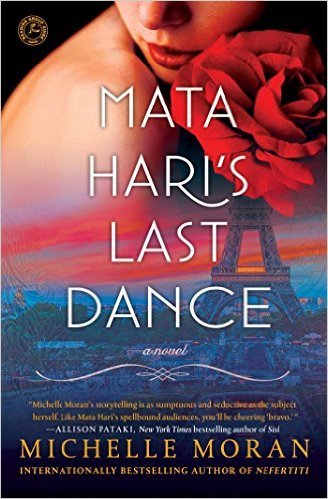 From the international bestselling author of Rebel Queen and Nefertiti comes a captivating novel about the infamous Mata Hari, exotic dancer, adored courtesan, and, possibly, relentless spy.
From the international bestselling author of Rebel Queen and Nefertiti comes a captivating novel about the infamous Mata Hari, exotic dancer, adored courtesan, and, possibly, relentless spy.
Paris, 1917. The notorious dancer Mata Hari sits in a cold cell awaiting freedom…or death. Alone and despondent, Mata Hari is as confused as the rest of the world about the charges she’s been arrested on: treason leading to the deaths of thousands of French soldiers.
As Mata Hari waits for her fate to be decided, she relays the story of her life to a reporter who is allowed to visit her in prison. Beginning with her carefree childhood, Mata Hari recounts her father’s cruel abandonment of her family as well her calamitous marriage to a military officer. Taken to the island of Java, Mata Hari refuses to be ruled by her abusive husband and instead learns to dance, paving the way to her stardom as Europe’s most infamous dancer.
From Indian temples and Parisian theatres to German barracks in war-torn Europe, international bestselling author Michelle Moran who “expertly balances fact and fiction” (Associated Press) brings to vibrant life the famed world of Mata Hari: dancer, courtesan, and possibly, spy.
My Opinion:
Mata Hari is a fascinating person who many people, especially women, will not like. Not every protaganist has to be liked, and Mata Hari is not a usual type of heroine we find in books. Promiscuous and a notorious flirt, she was a woman who fell on hard circumstances who had no choice but to use her beauty and body to earn a living. She pushed the limits in dance and in chasing and using men for her own benefit. One constancy in the novel was her love and regrets pertaining to her daughter. And this helped humanize her, redeem her a bit in the reader's eyes.
The book is perfect length and an easy read. Michelle Moran balances Mata Hari's passions and motivations in a realistic way. I did begin to like her and feel sorry for her and the mess she had made of her life. Of course, the novel did not dwell too heavily on the trial and convinction, but the execution scene was heart-wrenching and poignant. The book left me feeling more like Mata Hari was used as a scapegoat and I did not fully believe she was calculating enough to be such a dangerous spy. I had a sense that politics and cover-ups may have been at play as other readily blamed her to save their own skin.
This is an excellent historical biography about a notorious woman of history and left me feeling unconvinced about the hand that fate dealt her. Highly recommended.










Published on September 06, 2016 13:58
August 25, 2016
Josie Earp - A Bold and Brash Woman of the Wild West
 Josephine Sarah Marcus EarpBold, brash, daring, spontaneous, audacious, opinionated, and Jewish, Josephine Sarah Marcus Earp was one of the most colorful women of the wild west. After running away from home, she met and fell in love with sheriff, gambler, and businessman Wyatt Earp. Together, they conquered enemies, established the law, and socialized with some of America’s most fascinating people. But Wyatt Earp was not the first man she fell in love with and became engaged to.
Josephine Sarah Marcus EarpBold, brash, daring, spontaneous, audacious, opinionated, and Jewish, Josephine Sarah Marcus Earp was one of the most colorful women of the wild west. After running away from home, she met and fell in love with sheriff, gambler, and businessman Wyatt Earp. Together, they conquered enemies, established the law, and socialized with some of America’s most fascinating people. But Wyatt Earp was not the first man she fell in love with and became engaged to.
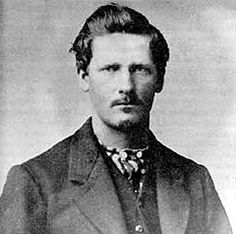 Wyatt EarpAfter running away from home at seventeen, she joined the Pauline Markham Theater Company. There she met the notorious rake, Johnny Behan – a divorced and bankrupt gambler and womanizer. After convincing her parents of his honorable intentions of marriage, he convinced them to let Josie move in with him in the town of Tombstone. After she moved in, however, he dragged his heels and a wedding never transpsired.
Wyatt EarpAfter running away from home at seventeen, she joined the Pauline Markham Theater Company. There she met the notorious rake, Johnny Behan – a divorced and bankrupt gambler and womanizer. After convincing her parents of his honorable intentions of marriage, he convinced them to let Josie move in with him in the town of Tombstone. After she moved in, however, he dragged his heels and a wedding never transpsired.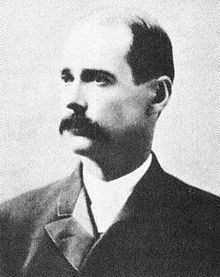 Johnny BehanThat’s when she met the handsome Wyatt Earp. Their attraction was mutual at first sight. As vendettas and trials and fights broke out, Wyatt and Josie came out unscathed at the shootout at the O.K. Corral. Afterwards, the two travelled around the south western United States.
Johnny BehanThat’s when she met the handsome Wyatt Earp. Their attraction was mutual at first sight. As vendettas and trials and fights broke out, Wyatt and Josie came out unscathed at the shootout at the O.K. Corral. Afterwards, the two travelled around the south western United States.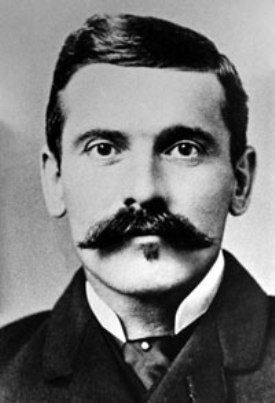 Doc HollidayWhen Wyatt died, Josie buried his ashes in the Marcus family plot in the Little Hills of Eternity, near San Francisco. She joined him in death in 1944 and was buried with him. Their gravesite attracts many visitors. Once, even their tombstone was stolen.An exciting biographical novel about Josie has just been released.
Doc HollidayWhen Wyatt died, Josie buried his ashes in the Marcus family plot in the Little Hills of Eternity, near San Francisco. She joined him in death in 1944 and was buried with him. Their gravesite attracts many visitors. Once, even their tombstone was stolen.An exciting biographical novel about Josie has just been released. 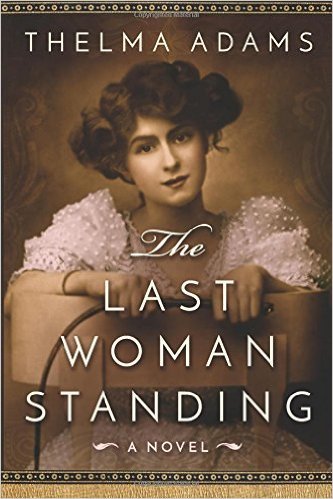 Two decades after the Civil War, Josephine Marcus, the teenage daughter of Jewish immigrants, is lured west with the promise of marriage to Johnny Behan, one of Arizona’s famous lawmen. She leaves her San Francisco home to join Behan in Tombstone, Arizona, a magnet for miners (and outlaws) attracted by the silver boom. Though united by the glint of metal, Tombstone is plagued by divided loyalties: between Confederates and Unionists, Lincoln Republicans and Democrats.But when the silver-tongued Behan proves unreliable, it is legendary frontiersman Wyatt Earp who emerges as Josephine’s match. As the couple’s romance sparks, Behan’s jealousy ignites a rivalry destined for the history books…At once an epic account of an improbable romance and a retelling of an iconic American tale, The Last Woman Standing recalls the famed gunfight at the O.K. Corral through the eyes of a spunky heroine who sought her happy ending in a lawless outpost—with a fierce will and an unflagging spirit.
Two decades after the Civil War, Josephine Marcus, the teenage daughter of Jewish immigrants, is lured west with the promise of marriage to Johnny Behan, one of Arizona’s famous lawmen. She leaves her San Francisco home to join Behan in Tombstone, Arizona, a magnet for miners (and outlaws) attracted by the silver boom. Though united by the glint of metal, Tombstone is plagued by divided loyalties: between Confederates and Unionists, Lincoln Republicans and Democrats.But when the silver-tongued Behan proves unreliable, it is legendary frontiersman Wyatt Earp who emerges as Josephine’s match. As the couple’s romance sparks, Behan’s jealousy ignites a rivalry destined for the history books…At once an epic account of an improbable romance and a retelling of an iconic American tale, The Last Woman Standing recalls the famed gunfight at the O.K. Corral through the eyes of a spunky heroine who sought her happy ending in a lawless outpost—with a fierce will and an unflagging spirit.
Opinion:
The first thing that grabbed me about this book was the brash and colorful first person narrative of Josie Earp. It's a bold, blunt, and in-your-face style and I loved it!
The book reveals to the reader, Josie's rebel heart, a woman who was not afraid to break away from her conventional Jewish upbringing to chase her passion - theatre and the notorious rake, Johnny Behan. At first, Johnny appears honorable, visiting Josie's parents and asking for her hand in marriage, then sweeping her away to Tombstone long before the vows could be uttered.
Almost immediately, Josie meets Wyatt Earp and the attraction between the two was instantaneous. In the meantime, Josie sets up a home with Johnny, but as time progresses, he drags his heels on all promises he made to her regarding marriage, home, and finances. She even discovers his womanizing and frequent trips to the local bordello. That's when she reaches out to Wyat. As the tensions heat up between these two men, Josie is helpless to thwart the gunfight at the OK Corral.
I thoroughly enjoyed this novel, especially the voice and the way the author brought to life the characters involved. I definitely enjoyed this book and am happy to recommend it for lovers of western historical fiction and women's biographical fiction.
I received a free copy of this book in exchange for an honest review. Thank you for visiting my blog, http://greathistoricals.blogspot.ca, where the greatest historical fiction is reviewed! For fascinating women of history bios and women's fiction please visit http://www.historyandwomen.com.









Published on August 25, 2016 09:35



